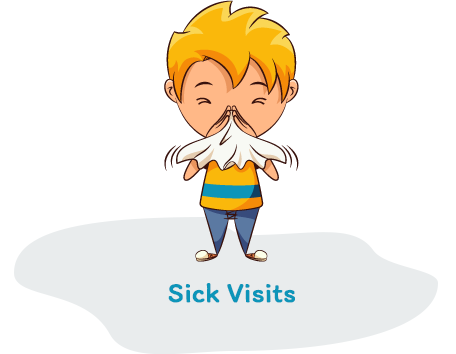Signs of Tonsillitis

Everyone is born with two tonsils. These are lymph nodes located right in the back of the throat. They help out the immune system by housing important white blood cells. Even so, the tonsils themselves can become infected, which is known as tonsillitis. The tonsils swell up, causing pain and discomfort. Children between the ages of five and eleven experience it the most. You need to bring your child in to see a pediatrician right away. Tonsillitis is commonly caused by streptococcus pyogenes also known as strep throat.
The Basics of Tonsillitis
Your tonsils work by trapping dangerous viruses and bacteria within. As mentioned before, this can lead them to become infected. Infections are easily transferred between children, with tonsillitis being caused by strep, adenovirus, the flu, and Epstein-Barr virus (mono).
Your pediatrician is highly qualified in treating tonsillitis. That is because almost all cases are found in children. During puberty, the tonsils shrink in size. This makes it much harder for them to become infected. You need to seek medical intervention right away. Infections can become life-threatening if not treated, leading to diseases like rheumatic fever. An even more serious complication is a peritonsillar abscess. The infection spreads beyond the tonsils and swells up the neck and chest tissues. This can block and stop your child’s airways.
Signs of Tonsillitis in Children
In children under the age of two that have problems communicating what is wrong, symptoms manifest in the form of excessive drooling, refusing food or bottles, and fussiness. Expect these symptoms in older children:
- Sore throat
- Noticeably bigger tonsils
- Fever
- Pain or problems with swallowing
- Yellow or white patches coating the throat and tonsils
- Swollen lymph nodes in the neck
- Foul breath
- Stiff neck
- Headaches
- A scratchy or rough voice
- Stomach pain
Diagnosing Tonsillitis
Your pediatrician won’t have any trouble diagnosing your child with tonsillitis. They will first start by asking for a brief history of when your child started feeling sick. The next step is performing a physical exam. The pediatrician will look in the throat, nose, and ears. If strep is suspected, a nurse takes a swab of the throat. A blood test will also be drawn to identify what bacteria or virus is responsible.
If strep or another bacteria is responsible for your child’s tonsillitis, antibiotics are prescribed. It’s important that your child finishes the whole dose. This guarantees that the entire infection is gone.







